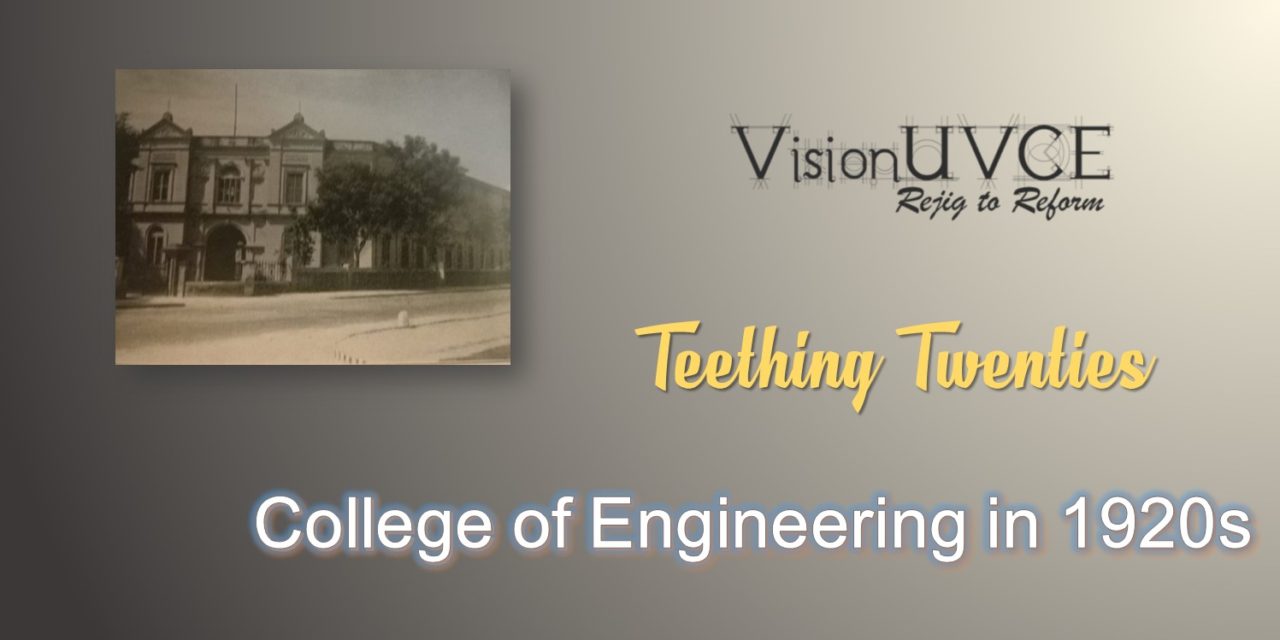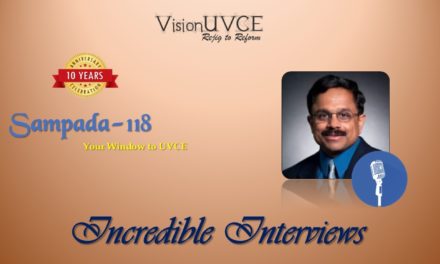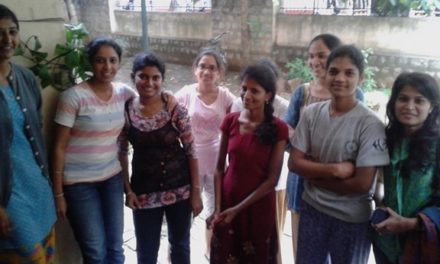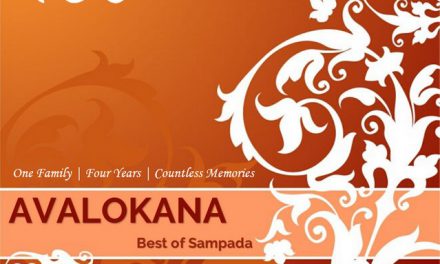Collating memories of UVCE etched by many of our alumni, here it is presenting to you – “Decadewise Memories”. This article is a narrative by Mr. K N Ranga Rao about their time at UVCE in 1920’s.
I thank you most sincerely for inviting me to preside over today’s function and address you this evening. Even ordinarily it gives one great pleasure to meet an old friend and to a greater degree in meeting an intimate friend after a longtime. This is an occasion for meeting many old friends all together; and in the very home that nurtured us and gave us birth in our professional career. To me who has spent most of my working life (after leaving this College) outside the Mysore State, the pleasure is multiplied a hundredfold. I am, therefore, deeply grateful to you for providing this opportunity of enjoying the company of teachers, classmates, fellow students and subsequent generations of students. This occasion brings all old students of various ages and groups into one common level of children of the same mother, bound by the same bond of love.
The quality of this love does not depend on the degree of successful career in the College, Class or in the field or in the fortunes of life. To each one, the College has given the opportunity to set himself on his feet. An old friend who did not even complete the college course has just written to me recalling the great time he had in our college. This common love of the Alma Mater bubbling through our hearts is really an expression of the esteem, gratitude and pleasure we have for the privilege of meeting great minds that shaped our careers, for the ability and character put into us for confidently going through the rugged path of life and the association with many friends whose company has made life worth-living.
The starting of the Mysore University was itself one of the farsighted and courageous steps taken our illustrious countryman Sir.M.Visvesvaraya that has helped so much in developing a distinctive personality of our own. The functioning of the engineering college the very next year, no doubt drawing inspiration from the same great engineer, was a landmark in the educational history. Doubting Thomases who could not reconcile themselves to this venture were surprised especially when the number of admissions to the first year class was as many as forty, it really contributed young men who could not be employed by the Mysore Government either easily. In 1921 when the first batch of students came out of the college to face the world, an unexpected situation developed itself and rendered it impossible for the State Government to offer employment to any but two who had been guaranteed the posts. However, the enterprise of the students who had in the training was such that quite a few of them ventured outside Mysore to seek employment. Thus although in the past a few young graduates who had secured high places in competitive examinations, had gone outside Mysore for employment the credit for starting the export, if I may say so, of educated young men as a regular feature generally, must go to this College.
I often wonder if any other Engineering College has been started under more appropriate conditions. Founded by an Engineer himself, the College Class rooms which were under construction were also practical lessons of the building art. The students had to dodge the scaffoldings or falling mortar from the extension under construction, to the building of the Mechanical Engineering School, which acted as foster mother by so willingly placing its workshop and staff at the disposal of the new infant college. I do not know if any other Engineering College in India had until then included” General and Business Economics” in its curriculum of studies.
Of the teachers one thinks naturally of the man who cheerfully shouldered the brunt of building up the College, at practically no notice, from nothing, to a great institution. Mr. K.R.Seshachar was the person who took charge of the baby and nursed it so industriously, loving and skillfully. We are all, I am sure, so glad to see him quite hale and hearty and taking a keen interest in the old students. He is known to recognize his old students by their little mannerisms. The College under his charge was a happy and intimate family in the first few years as the students were very few and the teachers knew every one intimately. Mr. Seshrichar was generally thought to be a serious man but I think he could not always keep his sense of humour completely subdued. Just before the first Intermediate Engineering examination, he walked into the Drawing Hall to inspect the drawings that the students had prepared during the two years. One of the students proudly showed his first sheet of elaboratory drawn block letters. Mr. Seshachar thought that this was a waste of time and quietly remarked “give it to you first born child.” His mastery of the subjects he taught was well known and I think a joke used to go round that if he ever sat for the examination none of the students in the class would have the chance of securing the first place.
The next in our memory is Mr.S.V.Setty. To me he had always represented the best combination of Indian European Cultures. A strong disciplinarian and a stickler to punctuality he was at the same time outstandingly Indian in his dress, talk and outlook of life.
Mr.S.RaghavendraRao was a personality all his own. His sharp intelligence and pointed wit used to keep the class fully attentive. The days he did not come prepared to the class where the ones most enjoyable. As a contrast he could on some days make the lectures heavy and learned too. But he was best known I think for his great sense of humor and ability to banter students out of any situation. He knew exactly how an engineering college had to be run, and often disarmed every student by his sincerety and candour. To one student who wished to evade the workshop, he quietly told him of his experience in the same direction when he was also a student, and how he regulated it later.
There were other teachers too, and I think mention may be made of Mr. S. Rama- swamy, who used to inspect survey parties, riding on a black horse, which was quite popular with the students—at least for the hair from its tail and all the prismatic com- passes had a habit of being bereft of the hairlines whenever he came on his horse.
– K N RANGA RAO





